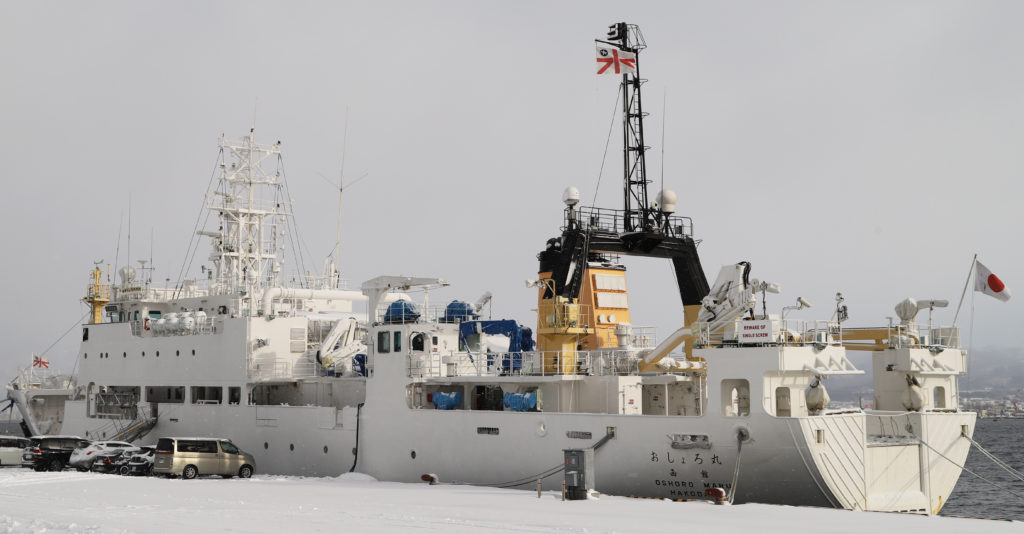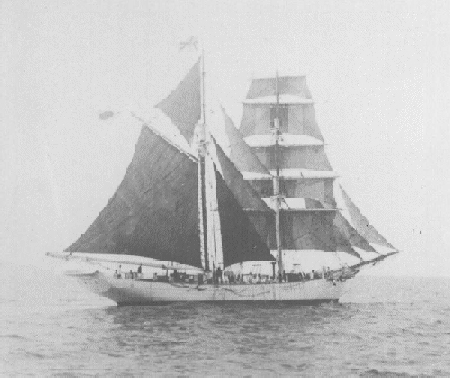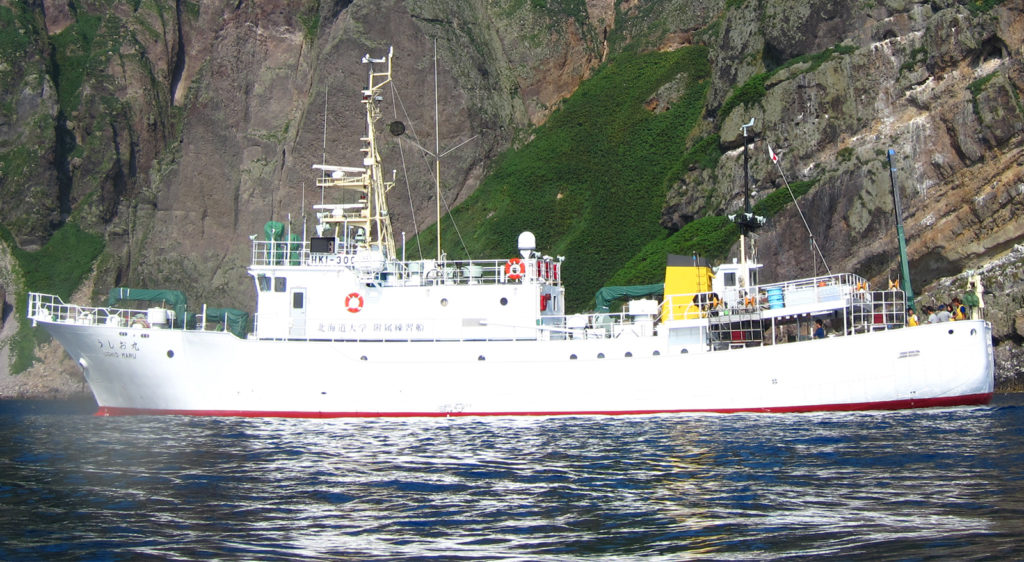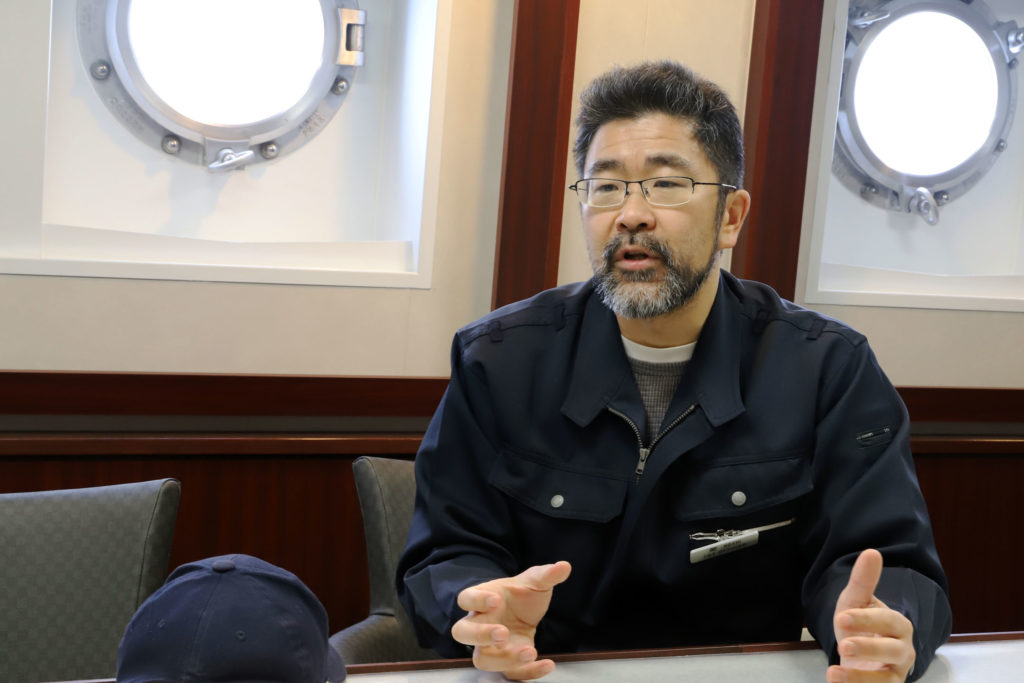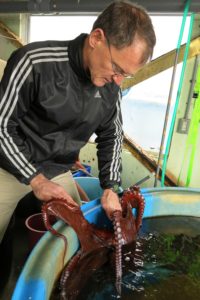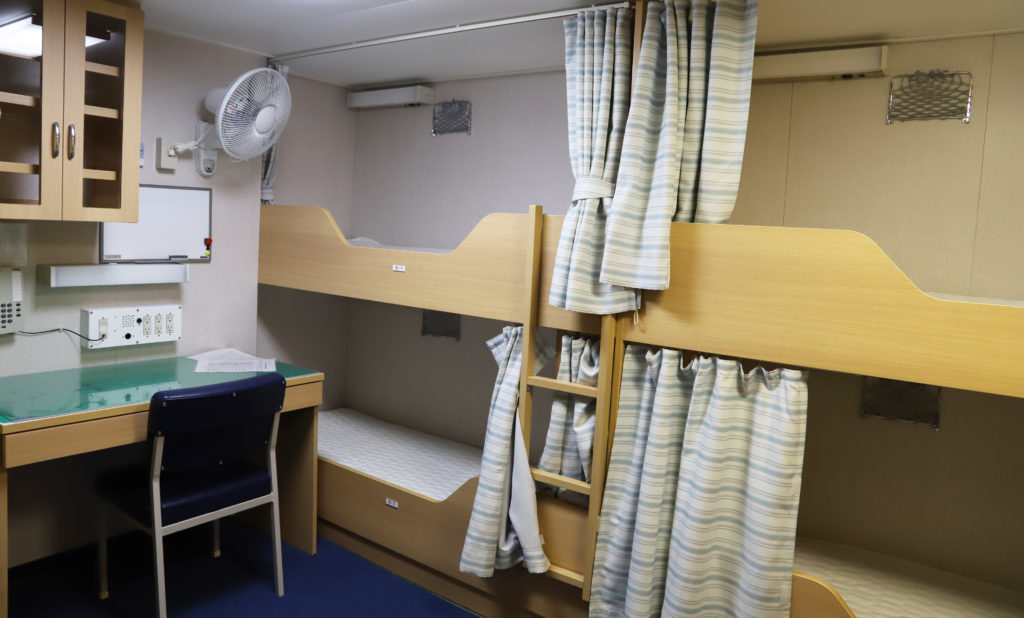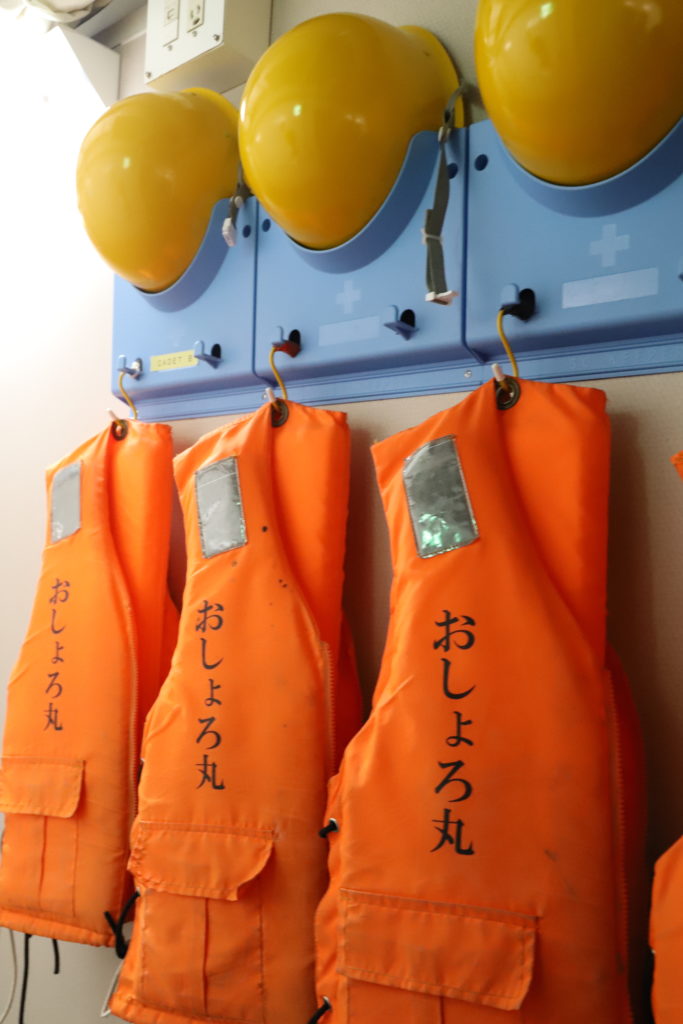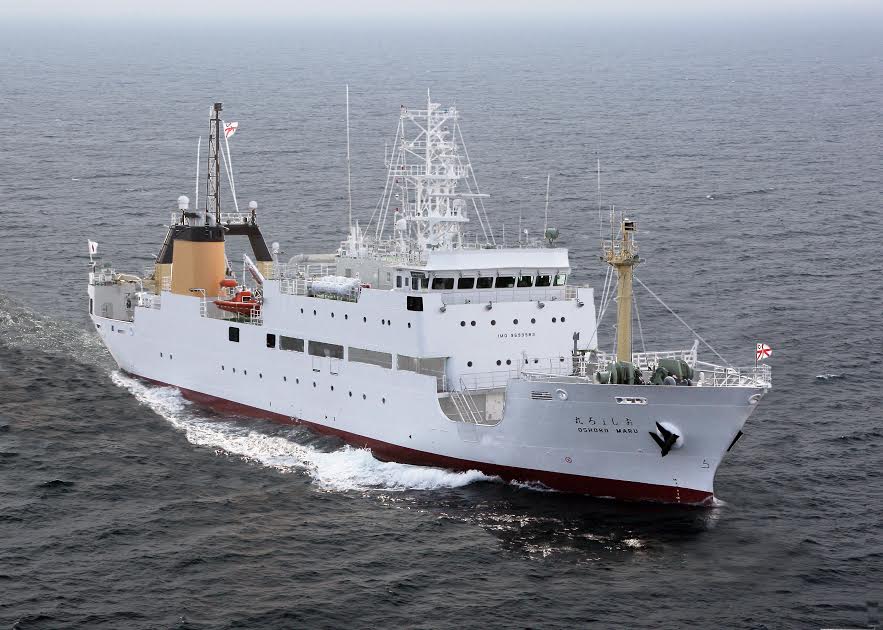Discover the Training Ship Oshoro Maru
University News | March 27, 2019
For more than 100 years, the training ship Oshoro Maru has been integral for the development of the educational and research ventures conducted by Hokkaido University’s School of Fisheries Sciences. The current ship Oshoro Maru V, completed in 2014, is one of only a handful of university-operated training ships in Japan, and can trace its roots back to the original Oshoro Maru I, a wooden schooner built in 1909. Together with the smaller training ship Ushio Maru, the Oshoro Maru V continues to provide both Japanese and international students and researchers with unique educational and fieldwork opportunities throughout the waters of the North Pacific.
.
The first officer on the Oshoro Maru V, Naoki Hoshi, has been working onboard the ship for 9 years, starting on the now-decommissioned Oshoro Maru IV. “The Oshoro Maru V is about the same size as the IV, and can carry up to 60 students and 7 researchers,” Hoshi explains. “The research equipment is also similar, but the echo sounder onboard the V is state-of-the-art. The main design concept of the ship wasn’t to be the most modern marine laboratory, but rather a base where good research could be conducted, and equipment easily updated or exchanged.”
.
Students and researchers are able to participate in a wide variety of voyages aboard the Oshoro Maru V, ranging from short trial experiences to 60-day trans-Pacific expeditions. In summer, there are freshman cruises, in which students spend two nights on the ship while docked and one night at sea. These cruises are open to all freshmen regardless of major. Students spend their time onboard engaging in activities like fishing and dissecting squid, collecting oceanographic samples, and bird watching, while students participating on different voyages might engage in more specialized activities based on their teachers’ research topic. One trip, dubbed the “Super Global Cruise”, is a 3-day voyage conducted entirely in English. Associate Professor John Bower from Hokkaido University’s Faculty of Fisheries Sciences has previously participated on these voyages. “Several international students, especially from Kasetsart University in Thailand, participate in the all-English voyages,” says Dr. Bower.
International students also participate on a 60-day excursion that takes the Oshoro Maru from its home port in Hakodate northward through the Bering Sea, usually making stops in places like Dutch Harbor, Alaska, and Seattle, Washington. “Students will usually spend half of the trip supporting their teachers’ research, conducting activities ranging from collecting sea water to observing whale pods,” says First Officer Hoshi. “The other half of their trip is spent doing ship training activities.”
The “Training Ship” designation is an important one for both the Oshoro Maru and the Ushio Maru, as it ensures that the focus of the ships is placed squarely on the educational experience of the student sailors, and not necessarily the various research experiments conducted onboard. “There used to be a one-year program meant to train students to become naval officers,” explains Dr. Bower. “This program no longer exists, but the title of “Training Ship” remains.” As one of the few ships designated for this purpose in the country, the Oshoro Maru will occasionally be used by Japanese students and researchers from outside Hokkaido University.
For many students, participating on one of the Oshoro Maru’s excursions will contain many firsts: the first time being without phone or internet access for extended periods of time, the first time being exposed to a 24-hour work cycle needed to maintain a ship, and the first time creating their own “house rules” and guidelines for living with others. “Students sometimes share a room with up to 6 people, and once the voyage is underway there really is no way out, which can be challenging for students,” says First Officer Hoshi. “They are also in charge of creating their own rules for their rooms, which for many may be the first time they have had that type of freedom. When I was a student aboard the Oshoro Maru IV, we had the freedom to handle our own living situation, and the staff on the ship now do our best to maintain that situation for current students as much as possible.”
.
Despite the specialized scientific and seafaring skills that students learn on an ocean voyage, some of the main skills that students are able to hone at sea are much more universal. For First Officer Hoshi, these skills are also important. “One aspect of learning on the ship is how to handle yourself when things don’t go according to plan. Training on the ship isn’t only for technical skills, but also learning how to cooperate effectively. We may one day reach a technological point when we can all do our jobs independently of each other, but as of now we still rely on others and must learn to cooperate. Students can learn this on the Oshoro Maru.”
More information on about the Oshoro Maru and Ushio Maru can be found at the Hokkaido University School of Fisheries Sciences website.
Written by Tyler Tannert
Photography by Dr. Katrina-Kay Alaimo

